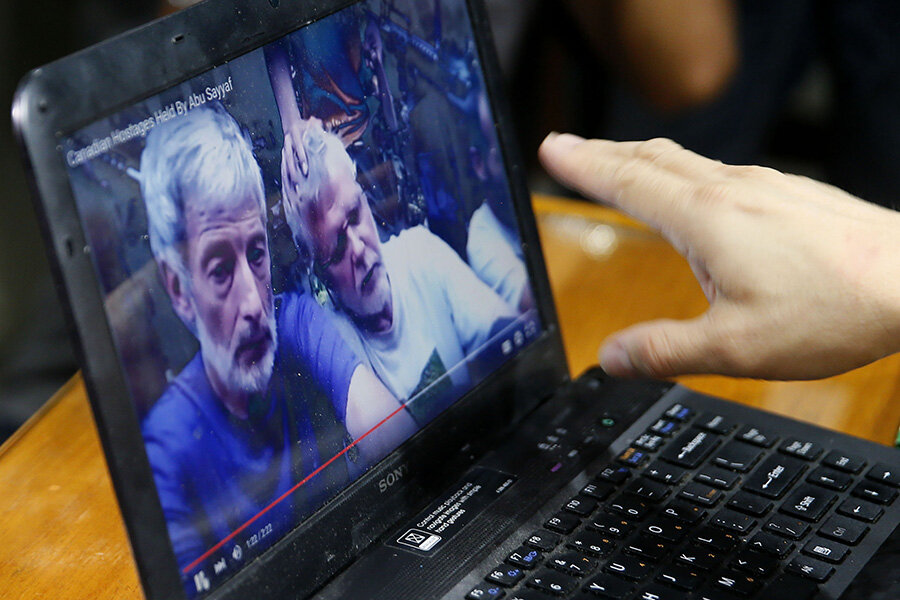Philippine militants make first demands in hostage video
Loading...
Militants thought to be with the group Abu Sayyaf posted the first video today of four hostages kidnapped last month from a Philippines resort, and demanded the Army stop targeting Abu Sayyaf bases in the region.
The abduction of two Canadians, a Norwegian, and a Filipino highlight the ongoing security challenges in the southern Philippines, an area hit by decades of communist and Muslim insurgencies. Despite pledges by the government in Manila to improve security, an Italian missionary was recently abducted from another southern province. Earlier in the year, the US State Department issued a warning about travel there.
In the video, masked men holding automatic weapons stand behind the hostages, who were taken from a resort on Samal Island on Sept. 21. The militants demand the end of military activity as a condition to negotiate with the Canadian and Philippine governments.
According to Reuters, many believe the hostages were taken west to the island of Jolo, where Abu Sayyaf, a militant group that claims an affiliation with Al Qaeda and the Islamic State, and are “known for bomb attacks, kidnappings, and beheadings,” has its stronghold.
The Philippine Army Wednesday rejected the militants' demands.
"There is no negotiation that can be made with any of those who are perpetrating this crime," military spokesman Colonel Restituto Padilla told the press in Manila.
Despite the armed men in the video standing in front of two black flags and yelling “Allahu akbar,” or "God is great" in Arabic, it is important not to conflate their actions with those of prominent Islamist groups operating in the Middle East, like Islamic State, according to Matt Williams, the Philippines country director for Pacific Strategies and Assessments.
“The Abu Sayyaf are all about the money and have little time for ideology,” Mr. Williams said, according to The New York Times.
The Times reports the abductions follow a moment of “relative optimism” in the southern Philippines:
In 2012, the government signed a peace agreement with the country’s largest Islamic rebel group, the Moro Islamic Liberation Front, which is based in the south. It was hoped that the deal, which did not include the groups suspected of recent kidnappings, would bring greater prosperity and security to the region.
Approval of the agreement has since stalled in the Philippine Congress, and the military has periodically fought intense battles against smaller rebel groups opposed to the deal. Military officials have said that the groups active in kidnapping are on the run and have expressed hope that the prominent abductions of the past two decades, which have been the subjects of books and international television shows, are over.








